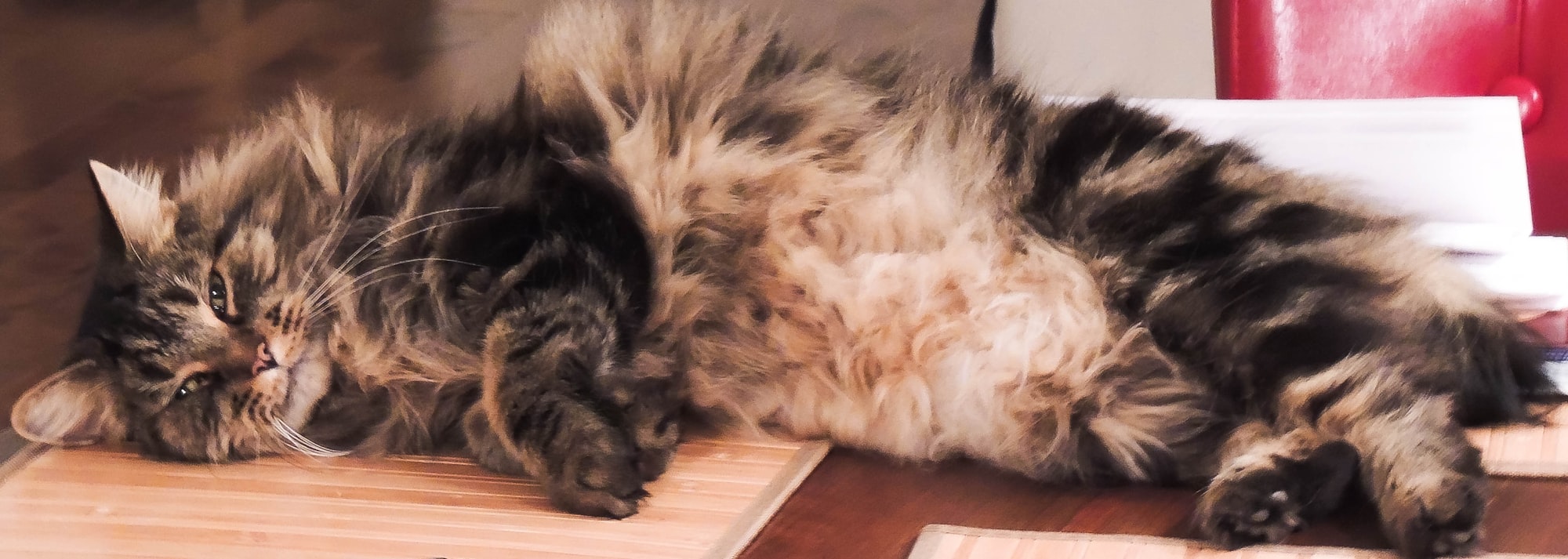Hi, Atus! (Hiatus.)
Wherein Steve pauses work on the computer project to make a right old bleedin' racket.

It's another episode of Steve's randomly timed posts where nothing is happening!
I've officially paused work on the don't-call-it-a-Cyberdeck. I'll resume it when I'm feeling more in the mood; it was in danger of becoming a chore and that's not the idea with hobbies. Loki remains half-built on the table over there (Steve gestures over his shoulder) and like all good gods of mischief will return.
So, what's the news?
Covid!
Covid came back and took me out for a second waltz. Not nearly as bad as the first time, but I'm still dealing with the Long Covid from that so maybe the symptoms just sort of blended...? I don't know. What I do know is that it remains a serious thing, it wiped me out for a fortnight and I've got missing memory again. The tinnitus has ramped up and the stabbing pain in my ear came back.
Covid is the absolute worst.

Synths!
I've got back into fannying about with homemade synthesisers, and I'm doing it properly this time. Previously I just went off and did my own thing, resulting in a case that resembled a patchwork quilt of ill-fitting 3D printed panels, with audio levels being standard line levels (because I hadn't learnt better). It was all a mess.
Now, the most common format for synthesiser modules (in a modular synthesiser, obvs) is Eurorack, which sees all the modules have the same height and standardised widths, so that they can fit side by side. They also have (more or less) the same voltage ranges for the audio and control voltages. The downside is that you need to have a case with particular rails and a power supply to use from the get-go, and I'd rather not drop cash I don't have on a case for something I am, as I said, fannying about with. What to do?
Well, what I did was 3D print rails to mount in the same sort of Ikea crate as I'd used before. A bit of measuring revealed that, with only a little modification, a vertically orientated crate could handle two rows of Eurorack modules - standard Ikea serendipity! Fusion 360 got fired up and I modelled the rails for the top and bottom and cobbled together something for the middle that I'm not entirely happy with (it's in three pieces - my next case, because there will be one, will have a redesigned centre rail). Obviously I wouldn't want to rely on 3D printed strips for all the required strength, so all the rails are backed with the same threaded rod I've been using in the definitely-not-a-Cyberdeck-no-sir. And holiest of holy cows, it all works perfectly.

Since that start I've moved the few remaining things I built before (and wanted to keep) into Eurorack format and tweaked all the things. ALL of them. And I've built new things, of my own design (adapting existing schematics in most cases) and kits of real actual proper Eurorack modules.
My current project is my sequencer/drum sample player, and I'm learning Python to make it. CircuitPython together with the VS Code plugin for it (once you've edited the plugin code to work around a bug I found when Covidy) are an absolute delight to work with. Here's a bit of video I just made, moments ago, of an ultra-basic beat being triggered by it, getting played through the Beaks module, with my old LFO modulating the timing of the reverb/delay. And some oscilloscope fun.
So here it's triggering external hardware; it's also got some 32KHz drum machine samples on there, which it is playing through its 12-bit DAC. (This post has descended into a word salad for anyone who doesn't do tech, and I would apologise if I weren't having a good time!) Once complete, it'll have four channels of selectable samples plus the three hardware triggers, with each sequence being 64 steps long (4 pages of 16) together with a clock input so that it can stay in sync with something else. The screen will assist with loading and saving things, changing modes, status information, etc.
What else?
Not much worth sharing.